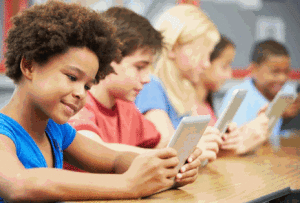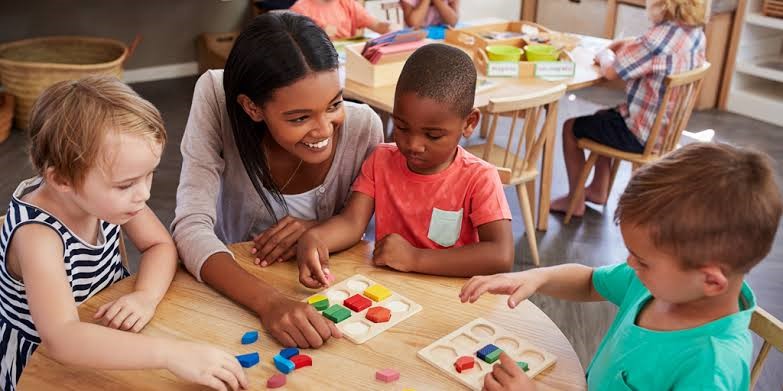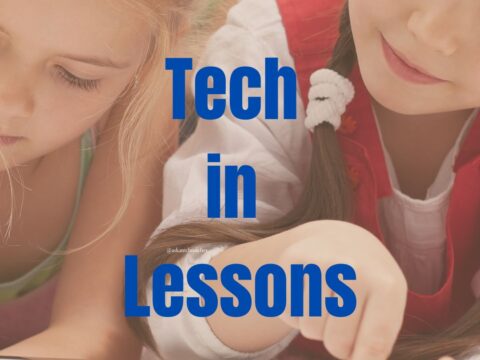 The technological advances of the past two decades have changed the world, and education is no exception. Today’s students have access to far more knowledge than their parents once found in encyclopedias and on maps. With the click of a mouse and without leaving the classroom, they can access the collective knowledge of all mankind via the Internet.
The technological advances of the past two decades have changed the world, and education is no exception. Today’s students have access to far more knowledge than their parents once found in encyclopedias and on maps. With the click of a mouse and without leaving the classroom, they can access the collective knowledge of all mankind via the Internet.
But that’s not the only way technology is making it easier for students to learn. Technology is facilitating communication between students and teachers, fostering increased engagement through educational games, and making it easier than ever for non-traditional students to attend university for the first time or get the credentials they need to advance in their field or switch careers.
Students who use technology in the classroom perform better, and emerge from their educations better prepared for the challenges of adult life.
Technology in the Classroom Keeps Kids in School, Helps Them Learn
On the primary and high-school levels, schools that successfully integrate technology into their classrooms see increased performance, better behavior from students, and lowered drop-out rates.
Schools that implement technology in their classrooms see a 92 percent reduction in the need for disciplinary action, a 90 percent increase in high-stakes test scores, 89 percent fewer drop-outs, and a 63 percent increase in graduation rates. Tablets, laptops, educational gaming software, and smartphones allow schools to:
- Personalize the learning experience
- Increase student engagement and collaboration through social media, simulations, and games
- Efficiently assess student progress as often as once a week, for more carefully tailored educational experiences
- Address the special needs of kids struggling with learning or cognitive disabilities, language barriers, or other obstacles to learning
The physical appearance of primary and secondary school classrooms is changing as many schools trade individual student desks for large tables around which students may sit with their laptops and tablets.
Schools are saving money on textbooks, supplies, and supplemental materials like maps and calculators, since students can read from e-textbooks, look up maps online, use the calculator function in their tablets or computers, do their work on their laptops, and hand it in by email or through online forums like Blackboard. Today’s teachers may no longer bother to write lessons on a physical chalkboard; instead they use online forums to share syllabi and classroom notes with students. Students, in turn, may learn lessons in a more hands-on way, through educational video gaming and simulations.
Teachers today need a firm grasp, not only of current technology, but of technologies to come. A great way for teachers to develop their technology skills is to go back to school online for an advanced degree like a MS in Instructional Technology or a similar degree.
Teachers needn’t worry too much about offering tech support. Many primary and secondary schools are getting around the lack of funding in this area by offering their students classes in laptop repair and other aspects of IT. This way, students get to learn a valuable skill for their future lives, and schools get their laptops, tablets, and other devices fixed at a low cost.
Higher Education Has Changed, Too
Primary and secondary school students aren’t the only ones who have seen drastic changes in the way they learn thanks to technology. University students are also learning in new ways.
Thirty years ago, the average university student was a young person, aged 18 to 24, newly graduated from high school. He or she didn’t work, at least not full-time, instead concentrating on his or her studies. But today, the average university student looks very different.
Forty-five percent of today’s university students take at least one class online. Fifty-five percent go to school part-time, and 75 percent live off-campus, juggling the responsibilities of a full-time job and family life alongside their academic ones. Of the eight million students enrolled in four-year degree programs today, two million are older than 21; one million are older than 25; and 500,000 are older than 30. Technology has made distance-learning much easier for these students, who can now take university classes on their own time, as their work and family schedules permit.
Technology has changed every part of the way we live — and the way we learn. It’s helping primary and secondary school students enjoy school more and behave better in the classroom — and for many non-traditional students, it’s the only thing that makes attending college a possibility at all.
–from Michaela with the Ask a Tech Teacher Crew
–images used with permission
More on the future of education:
What’s Tomorrow’s Student Look Like
10 Tips for Teachers who Struggle with Technology
What is the 21st Century Lesson Plan?
Jacqui Murray has been teaching K-8 technology for 15 years. She is the editor/author of over a hundred tech ed resources including a K-8 technology curriculum, K-8 keyboard curriculum, K-8 Digital Citizenship curriculum. She is an adjunct professor in tech ed, CSG Master Teacher, webmaster for four blogs, an Amazon Vine Voice book reviewer, Editorial Review Board member for Journal for Computing Teachers, CAEP reviewer, CSTA presentation reviewer, freelance journalist on tech ed topics, and a weekly contributor to TeachHUB. You can find her resources at Structured Learning.
updated 5-2-16




































Hi there,
Have you seen any blended learning seminars for teachers, that give credits or may not give credits. Thanks in advance, Jeanne Boudreau
I have three–The Tech-infused Teacher (certificate), Tech-infused Teacher (college credit), and the Differentiated Teacher (college credit). Does one of these work for you?
It’s true, that today not only students but teachers as well should be prepared for using technology in the classroom. Sad, but I still meet teachers, who have problems with using even Google Apps. But I believe, that at this time teacher has to continue his/her education by passing some online courses/attending seminars, workshops, etc. for example, implementing into your classroom corporate plagiarism checker will decrease cheating with writing assignments and will promote in your classroom originality in thinking and writing.
You’re right, Chris. Good addition.
Thank you for this knowledgeable article.
My pleasure, Pochie!